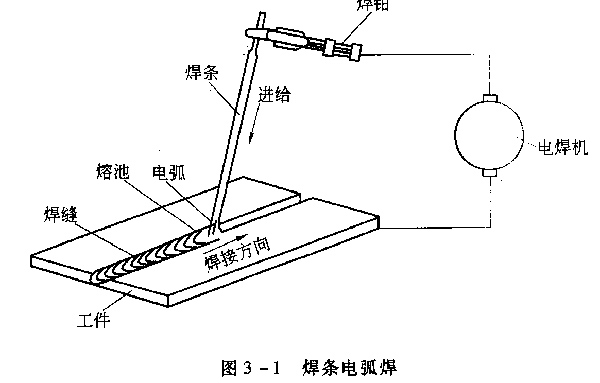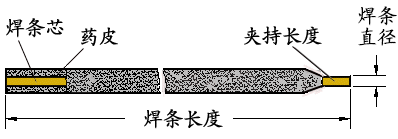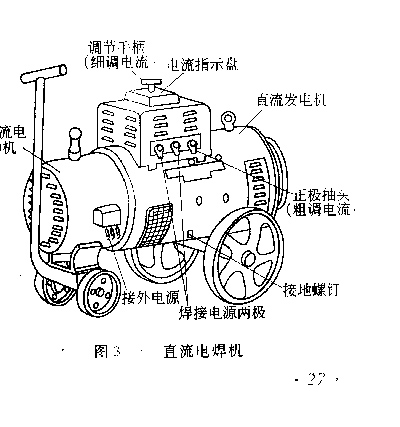Welding rod arc welding basic knowledge
1.1 Basic knowledge
Arc welding is the use of heat generated by arc discharge, the electrode and the workpiece are locally heated and melted, and then condensed to complete the welding.
The process of arc welding is shown in Figure 3-1. The workpiece and the welding tongs are respectively connected to the two electrodes of the electric welding machine, and the welding rod is held by the welding tongs. When welding, the electrode is instantaneously brought into contact with the workpiece, and then it is lifted again, and an arc is generated between the electrode and the workpiece. Arc heat melts the workpiece joint and the electrode to form a molten pool. As the electrode moves forward in the direction of the weld, a new molten pool is continuously formed, and the first molten metal is rapidly cooled and solidified to form a firm weld, thereby joining the two separated metals together. The maximum temperature at the center of the arc can reach 6000 °C.


Figure 1 electrode
1.1.1 Welding machine and welding tongs
There are two types of electric welding machines for electrode arc welding: AC welding machine and DC welding machine.
(1) AC welding machine AC welding machine is a special step-down transformer (Figure 3-2). It reduces the supply voltage (220 volts or 380 volts) to 60 to 70 volts at no load and operates at 30 volts, which can output large currents from tens of amps to hundreds of amps. The current can be adjusted according to the welding needs. The current adjustment can be divided into two levels: coarse adjustment and fine adjustment. The coarse adjustment is the connection method that changes the output tap, and the adjustment range is large. Fine tuning is to rotate the adjustment handle to adjust the current to the desired value. 
The AC welding machine has a simple structure, convenient manufacturing and maintenance, low price, low working noise and wide application. The disadvantage is that the welding arc is not stable enough.
(2) DC welding machine
The DC welding machine consists of an AC motor and a special DC generator (Figure 3-3). The motor drives the generator to rotate and emits a direct current that meets the welding requirements. The no-load voltage is about 50 to 80 volts and the operating voltage is 30 volts. The current adjustment range is from 45 to 320 amps, and is also divided into two levels: coarse adjustment and fine adjustment.

DC welding machines are available in two ways. When the workpiece is connected to the positive electrode and the electrode is connected to the negative electrode, it is called positive connection. If the workpiece is connected to the negative pole, the electrode is connected to the positive pole. Since the temperature of the positive electrode region of the arc is high and the temperature of the negative electrode region is low, the temperature of the workpiece is high for the welding of the ferrous metal when the positive connection method is used, and the non-ferrous metal and the thin steel plate are welded by the reverse connection method.
Cupping Testing Machine,Automatic Cup Test Machine,Cup Test Machine,Cup Testing Machine
Jinan Chenda Testing Machine Manufacturing Co., Ltd. , https://www.jncdtester.com